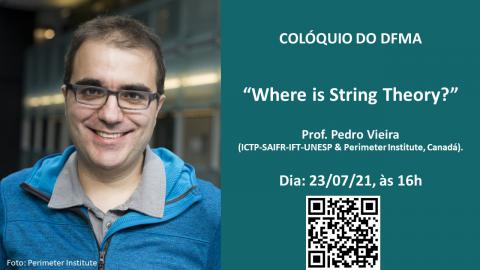An update on phenomenological constraints of properties of the quark-gluon plasma | Colóquio DFMA

Transmissão ao vivo via YouTube
Resumo:
At extremely high temperature, there exists a deconfined state of matter known as the quark-gluon plasma (QGP), where color degrees of freedom are liberated. In order to achieve the necessary temperature to study the QGP experimentally, heavy nuclei are collided at ultrarelativistic energies, and measurements made. In this colloquium I review recent progress in determining properties of the QGP from relativistic heavy ion collision data -- specifically, a recent verification of deconfinement and the liberation of color degrees of freedom via the QGP equation of state, and recent developments using Bayesian inference to extract the shear and bulk viscosities of the QGP.
Referências:
Nature Phys. 16 (2020) 6, 615-619 (arXiv:1908.09728)
Phys.Rev.C 103 (2021) 5, 054904 (arXiv:2011.01430)
Phys.Rev.Lett. 126 (2021) 24, 242301 (arXiv:2010.03928)





